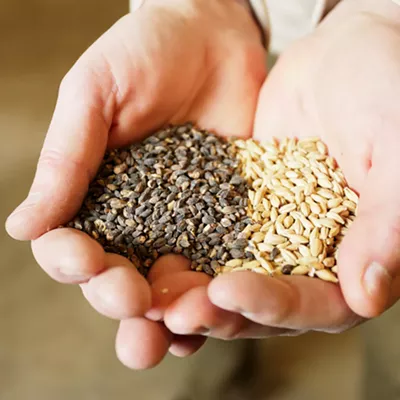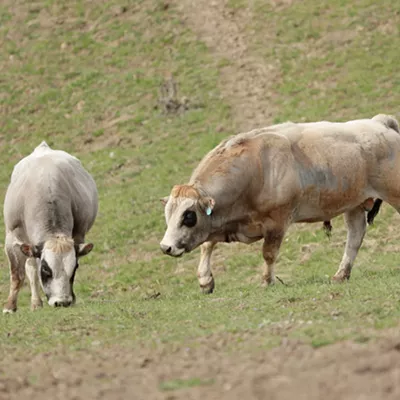If you drive two hours north of Seattle and hop onto a ferry, you'll arrive at Lummi Island, home of the Willows Inn. While the guest rooms are cozy, most people are there for the food. In 2011, the New York Times named this restaurant one of 10 worth an entire plane ride. In 2015, Head Chef Blaine Wetzel was named Best Chef Northwest by the James Beard Foundation.
Everything on the menu has been sourced hyperlocally. Wetzel, whose previous position was as a chef de partie at the highly acclaimed noma in Copenhagen (the subject of its own documentary), draws upon the bounty of the Pacific Northwest to create deceptively simple, elegant food — geoduck kebabs, prawn toast and seaweed, yellowfoot mushrooms and sunflower roots — which he serves to small groups of diners. Reservations must be made far in advance, and it's a significant financial investment. Willows' tasting menu is $195 per person; if you want wine pairings, it's an extra $90.
Just before Chef Wetzel came on the scene, food and travel writer Joe Ray was attending a wedding at the Willows Inn. He fell into conversation with then-owner Riley Starks, who shared the news of the incoming chef. Although Ray was living in Europe at the time, he stuck around Seattle and became the first journalist on the spot when Wetzel arrived.
"He was just starting the kitchen; he was trying to figure out how to rearrange things to make it work, and getting a sense of what the island was like," recalls Ray. "We went to some of his purveyors, we saw how some of the stuff worked, and then I got to spend the end of the day in the dining room having a meal. Having been in Europe — I had been to noma where he came from, I'd lived in France and wrote about food for 10 years — I could see: there's nothing like this within 500 miles."
Every time Ray was in Seattle, he'd visit the Willows, continuing to write about it. After a couple of years he suggested a book collaboration, which eventually became Sea and Smoke: Flavors from the Untamed Pacific Northwest, published in the fall of 2015.
It quickly became clear that such a project would involve significant time on Lummi. Ray moved to the island for a year just to work on it. He worked in the kitchen and on the farm to get the recipes for the book just right, and wrote several essays intended to illuminate just how much work goes into a dinner at the Willows.
"The first half of the book is me telling stories about working in the kitchen, about how they catch these fish, about how they have a little farm just for the restaurant," says Ray. "There's so much that goes into making a restaurant that's this good and this once-in-a-lifetime-y."
He sees the book as a peek behind the curtain: "It's almost a way to answer the question: why are these places so incredible?"
The second half of the book includes the recipes from Ray's year at the Willows, with commentary from Chef Wetzel. While the dishes might be challenging for the average home cook to attempt, Ray made certain that they were all accurate. The recipes and essays are accompanied by vivid photography of the food and the island.
"A book is a way to take a snapshot of the place and show what it's like there," says Ray. "Whether it's with the recipes, whether it's what Blaine wrote, whether it's what we worked on together, whether it's what I wrote — I would hope that it conveys that sense of place the way the food does." ♦
Sea and Smoke: Flavors from the Untamed Pacific Northwest is available at Auntie's Bookstore; 402 W. Main, or online at auntiesbooks.com.


















